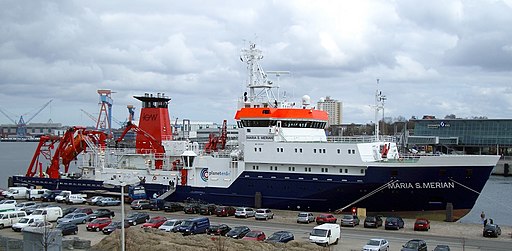Tudo vai bem no Atlântico, agora estamos mais próximos da América do Sul que da África. O ritmo de trabalho é intenso, mas está funcionando bem.
O cruzeiro MSM60 faz parte de uma iniciativa do projeto europeu AtlantOS e do programa POGO, como já havia comentado antes. Com a malha amostral densa, o cruzeiro tenta fazer um painel sinótico da circulação e biogeoquímica do Atlântico Sul de leste a oeste, na latitude 34.5S. Além disso há uma componente de capacitação bem forte, com participação de alunos de doutorado e cientistas de 8 países diferentes (Alemanha, França, Argentina, Itália, Brasil, Suécia, África do Sul e Inglaterra), e maioria feminina absoluta! Anteriormente, haviam sido realizados outros cruzeiros, mas limitados às bacias leste e oeste nesta latitude.
Para dar uma ideia melhor das atividades a bordo, sugiro a leitura do relatório semanal (1a semana, outros virão - escolha seu idioma e clique para baixar o pdf) do cruzeiro:
---------------------------------------------------------------------------------------------
Everything is fine in the Atlantic. We're now closer to South America than Africa, and working a lot!
MSM60 is part of a joint initiative from EU-project AtlantOS and POGO, as I've commented before. The goal is to have a synoptic picture of the whole section along latitude 34.5 S, and of course it has a strong capacity building component. We're scientists and students from 8 countries (Germany, France, Argentina, Italy, Brazil, Sweden, South Africa and England), and mainly women scientists! There have been quite a few former cruises along the 34.5S latitude, but they were restricted to either eastern or western basins.
To give you a better idea of our life on board, check out the first weekly report (the following ones will arrive soon). Just click on your favourite language to download the pdf:
 | ||
| Stern view from the bridge |
 |
| Happy selfie - #quemédomarnaoenjoa |










